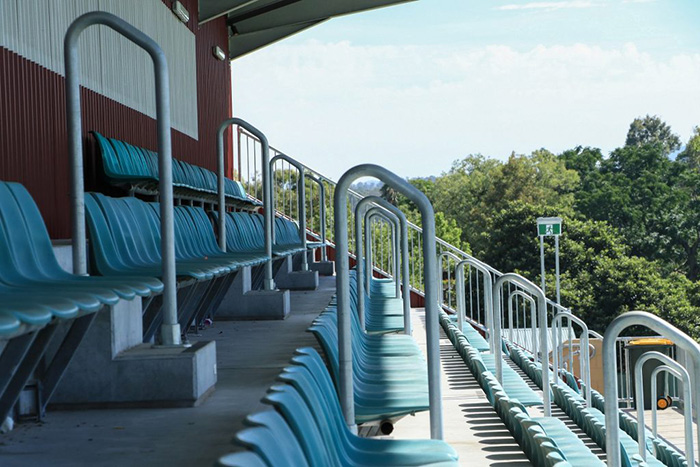A recent Architecture & Design podcast, sponsored by Moddex, featuring Hayball project leader Eilish Barry, discussed the social value of architecture.
This conversation highlighted how thoughtful design can positively impact people’s wellbeing and quality of life, and how monetising this impact is important in ensuring social wellbeing is prioritised in key decision-making processes from the beginning of a project. This goes for every aspect of a built environment, right down to the aesthetics, functionality and design of seemingly simple elements such as handrails, balustrades and access ramps.
As a leading designer and manufacturer of modular safety railings and access ramps, Moddex understands how products such as ours can contribute to improved accessibility and inclusivity, and consequently a solid socially sustainable future.
Importance of architecture in social sustainability
Social sustainability goes beyond the largely recognised issues of combating hunger, good health and equal opportunity – architecture also plays a huge role. Research shows that traditionally architects have focused on overcoming accessibility barriers as an afterthought, often adding solutions at the end of the design process.
The principle of social sustainability, however, challenges this approach. It encourages architects and engineers to keep social wellbeing, including accessibility solutions and inclusive design, front of mind from the very beginning, in the same way structural, distributive and environmental considerations are thought of. The result is creating spaces that are functional, user-friendly and inviting that stand the test of time.
This is aligned with the UN’s 2030 Agenda for Sustainable Development, which emphasises universality and inclusiveness, and underlines the need to achieve a new way to design urban spaces and buildings able to guarantee safety, health, independence, education and leisure to all.
The repercussions of inaccessible design are not just compliance and safety risks; they have tangible and often profound effects on users. Inaccessible design not only limits the participation of individuals with disabilities and impacted mobility but can also result in exclusion and a poorer quality of life.
So, how do handrails, balustrades and safety barriers help make this happen?

How handrails, balustrades and access ramps champion social sustainability
Compliant handrails, balustrades and access ramps (and the compliance standards and building codes that come with them) play a vital role in creating a built environment that supports everyone, regardless of age or ability. These seemingly simple features are an investment in a more inclusive future, ensuring longevity of social sustainability by not just providing physical ease of movement but also a greater sense of belonging and empowerment for all.
Properly designed handrails and balustrades offer a sense of security and support, allowing people of all abilities to move confidently through a space. This includes those with temporary or permanent mobility limitations, older adults and even young children.
Designing accessible ramps and stairs that meet proper gradients and width requirements become more than just passageways that contribute to a more efficient traffic flow. They become pathways to independence and dignity for people who use wheelchairs, walkers, mobility scooters or people with prams.

Modular barrier and access systems provide more flexibility for accessibility
Modular handrails, balustrades and access ramps, such as Moddex’s Assistrail® disability handrails and Ezibilt® ramp, walkway and stair system, go a step further because they allow for more flexibility in design, ensuring rails and ramps can adapt to different needs.
Assistrail is designed for the mobility impaired and vision impaired, and other persons in need of extra support such as pregnant people and children in schools, as it has single or double rail configurations, and ergonomic connectors that allow for unimpeded flow of the hand on a rail, and is easy to retrofit or dismantle for reconfiguration. The Ezibilt ramp is a pre-engineered ramp solution constructed with safety features and compliance measures in its design, and equipped with adjustable platform heights.
Moddex goes a step further with sturdy and secure tamperproof fixings, including a range of mounts and the proprietary Dexx locking screw that offer extra reliability for safety. In addition, Moddex’s tactile indicators for pedestrians who are blind or visually impaired offer further support by warning them of changes to the environment such as slopes, stairs or a change in surface.
Moddex champions inclusive design
At Moddex, we take pride in being a leading designer and manufacturer of modular balustrades and handrails. We understand the importance of functionality alongside aesthetics. Our products are not only compliant with safety standards and rigorously tested, but also designed to seamlessly integrate into any architectural style. By incorporating well-designed handrails, balustrades and access ramps, we contribute to creating spaces that are not just safe but also promote increased mobility, enhanced confidence, and aesthetics that complement.
Investing in well-designed handrails, balustrades and access ramps isn’t just about meeting safety regulations; it’s about creating spaces that are inclusive and functional, and ultimately contribute to a better quality of life for everyone, ensuring social sustainability.

